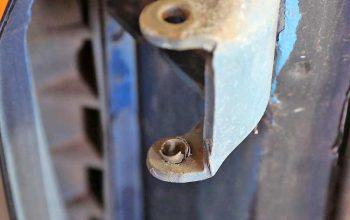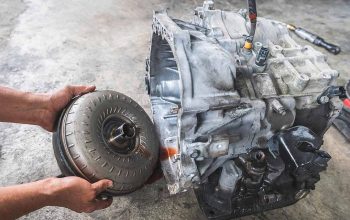The gear ratios are an important aspect of a vehicle including your Dodge Ram truck. Because they determine how much power is sent to the wheels of a vehicle.
The 3.73 and 4.10 are two popular gear ratios to use in a Dodge Ram. And, in today’s article, we will compare both and see which wins the battle – Ram 3.73 vs 4.10 gears. Besides, we will discuss the features and pros-cons of both so that you can make an informed decision about which gear ratio fits your vehicle and driving style.
Gear Ratio Basics
Before we dive into the specifics of 3.73 and 4.10 gears of a Dodge Ram, let’s first define what gear ratio is.
So, what is a gear Ratio?
Simply put, the gear ratio is the ratio of the number of teeth on the driven gear (ring gear) to the number of teeth on the driving gear (pinion gear). This ratio affects how much power is sent to the wheels, which in turn determines how the vehicle performs.
A lower gear ratio (e.g. 3.73) will result in better fuel economy and easier driving in traffic, but slower acceleration and a lower top speed. On the other hand, a higher gear ratio (e.g. 4.10) will result in faster acceleration and a higher top speed, but worse fuel economy and harder driving in traffic.
3.73 Gears
The 3.73 gear ratio is widely used in many Dodge Ram truck engines and a wide range of other vehicles, as it provides a balance of performance and fuel efficiency.
Pros:
- Better fuel economy
- Easier to drive in traffic
Cons:
- Slower acceleration
- Lower top speed
4.10 Gears
For those who prioritize performance over fuel efficiency, the 4.10 gear ratio may be a better choice.
Pros:
- Faster acceleration
- Higher top speed
Cons:
- Worse fuel economy
- Harder to drive in traffic
Comparison of 3.73 and 4.10 Gears
When comparing 3.73 and 4.10 gears, it’s important to consider your driving needs and preferences.
For those who spend most of their time on the highway, a 3.73 gear ratio may be the better choice for better fuel economy and a more comfortable driving experience. On the other hand, for those who enjoy off-roading or want faster acceleration, a 4.10 gear ratio may be the way to go.
Frequently Asked Questions
How do I know what gear ratio my vehicle has?
Different vehicle has different vehicle ratios available. To be specific about it, you can check the specifications of the vehicle in the owner’s manual or you can consult with the dealer.
Can I change the gear ratio on my vehicle?
Yes, it’s possible to change the gear ratio on a vehicle. But to doing this change, you should consult with a professional mechanic or specialized automotive shop.
What are the common gear ratios for trucks/SUVs/performance vehicles?
It can vary depending on the model, make and year.
How does changing the gear ratio affect my vehicle’s warranty? It’s best to consult with the manufacturer or your local dealership to understand the implications of changing the gear ratio on your vehicle’s warranty.
Is it necessary to change the differential when changing gear ratios? It depends on the vehicle and the gear ratio is installed. It’s best to consult with a professional mechanic or specialized automotive shop.
How does changing the gear ratio affect towing capacity? Changing the gear ratio will affect the vehicle’s
towing capacity, as a higher gear ratio will result in more power being sent to the wheels. This can increase the vehicle’s towing capacity, but it’s important to keep in mind that it can also result in worse fuel economy and harder driving in traffic.
What is the best gear ratio for highway driving and what is the best for off-road? For highway driving, a 3.73 gear ratio is often recommended for better fuel economy and a more comfortable driving experience. For off-road driving, a 4.10 gear ratio is often recommended for faster acceleration and a higher top speed.
Final Words
In conclusion, gear ratios play an important role in determining how a vehicle performs. By understanding the pros and cons of both 3.73 and 4.10 gears, you can make an informed decision about which gear ratio may be best for your vehicle and driving style.



